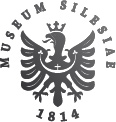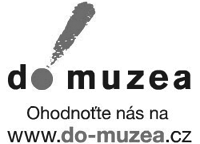Slezský sborník
rok 2016
ročník 114
číslo 1
Obsah / Contents
Studie / Articles (s. 5–143)
Jarosław KUCZER – Marcin MACIEJEWSKI: Szlachta księstwa legnickiego w drugiej połowie XVII w. w świetle spisu dóbr ziemskich z 1676 r.
s. 5–28
Nobility of the Duchy of Legnica in the second half of 17th century in the light of lad goods from 1676
The history of Silesian nobility and aristocracy has been the subject matter of only few monographic research works but many research articles written in Poland, Czech Republic and Germany. The same applies to more specific research focused on particular problems in the life of this social stratum. To date, there has been no particular research that would allow for a wider recognition of the Silesian nobility structure at the level of individual duchies or principalities. Without this type of research contained in this article, it will remain particularly difficult to understand the differences but also the similarities and characteristics of nobility structures. The article is primarily a thorough analysis of noble society structures, using the data contained in the list of land goods and estates from 1676, Duchy of Legnica (stored in the National Archives in Wroclaw). Based on the results the article shows the possibility of political-legal and public life of this stratum in the Duchy of Legnica in the second half of the seventeenth century.
Marek SKUPIEN: Několik postřehů k starším církevním dějinám Skřipova na Opavsku (do konce 17. století)
s. 29–42
Some reflections on the early Church History in Skřipov near Opava (until the end of 17th century)
The purpose of the paper is to reconstruct the early Church history in the village Skřipov in the Opava region (before the end of 17th century), which has not been processed by methods of modern critical historiography, neither has it attracted the attention of historians.
Marzena BOGUS: O muzyce i książkach w nieznanej korespondencji Jana Winklera i Andrzeja Cinciały
s. 43–54
About music and books in the unknown correspondence of Jan Winkler and Andrzej Cinciała
This paper deals the unknown letters of Jan Winkler, a parson from Nawisie, and the then student of the Cieszyn gymnasium (later a notary), Andrzej Cinciała. The correspondence mainly dates to 1846–1848. The texts published in the attachment evidence a collaboration of the Slavic intelligence representatives in the support of local culture by means of dissemination and popularization of folk songs. The presented correspondence confirms the efforts by the then regional leaders to build historical awareness and to support Slavic traditions of local inhabitants.
Jiří JUNG: Deník Marie Lichnowské (1860–1862)
s. 55–79
Diary of Marie Lichnowsky (1860–1862)
The Diary of Marie Lichnowsky, née Croÿ-Dülmen, is a record of events from October 1860 to June 1862. It provides a material to study day-to-day life of the Silesian high aristocracy, their life style, behavioural patterns, and it reveals the author's interests and her cultural inclination. The records are focused on everyday occurrences, hobbies, children and family, and importantly on her husband's political, constructive and social activities. It shows the links to other Silesian aristocracy. The Diary seems to be an important source for learning about a day-to-day life and the author's life style and the world of high aristocracy of the region, in general.
Milan MYŠKA: „Osvětou a sebeobranou ku pravé svobodě a zámožnosti" aneb stručné dějiny Tkalcovského výrobního družstva ve Vyšních Lhotách
s. 81–96
"Through Public education to true freedom and wealth" or Brief History of the Weaving Manufacturing Co-operative in Vyšní Lhoty
In the last decades of the 19th century primarily sub montane regions in the Czech lands were affected by the crisis of the domestic industry, especially that of weavers, which was gradually losing its positions in the competition with factories. Extensive areas were under the threat of pauperism and thus social and political radicalization. The government in Vienna, regional authorities and local government authorities realized that the process was impossible to cease by the up to then common mitigation means, especially when the population strata afflicted with such objective and irreversible processes were mostly indifferent towards their situation. Thus emerged an idea to involve the immediate domestic producers in the process of mitigating social impacts of the crisis by establishing co-operatives, which had proved to be useful in many other countries (Equitable Rochdale Pioneers, Waldviertel, etc.) Thus emerged a plan, in the badly afflicted region of Pobeskydí, to establish a weaving co-operative that would purchase materials or semi-finished products, allocate work and deal with marketing the goods with big purchasers (state, army, hospitals, railways, etc.) The co-operative was established in 1900 and started its business on the weavers' exhibition in Vyšní Lhoty. The co-operative's operation delayed the urgent crisis of domestic weaving, however, it appeared not to be effective in the competition with factories.
Michal SOJČÁK: Otázka státního občanství železničních zřízenců na Těšínsku v letech 1918–1938
s. 97–113
Question of citizenship of railway employees in the Těšín region in 1918–1938
This paper deals with the citizenship of railway employees in the Těšín region after 1918. A dispute over state affiliation of the former Principality of Těšín between Czechoslovakia and Poland was terminated by Decision of the Conference of Ambassadors on the Těšín, Orava and Spiš regions in Paris of 28 July, 1920. It also determined what citizenship the inhabitants of the Těšín region should have. However, the state civil situation there continued to be rather disorganised and citizenship was assigned in the atmosphere of general chaos. It also affected railway employees. In 1920-1923, many of them were wrongly informed by Czechoslovak authorities or other persons about them becoming Czechoslovak citizens automatically in 1920–1923. Therefore the citizenship of most of them was challenged or even revoked in the course of the 1920s and 1930s. Nevertheless, Czechoslovakia adopted such an attitude then that it granted Czechoslovak citizenship to such affected persons again, even though a lot of them claimed to be of Polish nationality.
Dušan JANÁK: Zapomenutá stávka: ostávce ve Slezských bavlnářských závodech ve Frýdku v srpnu 1948
s. 115–143
Forgotten strike: On strike in the Silesian cotton works in Frýdek in August 1948
This study deals with the causes and course of a strike in the cotton mills of Silesian Cotton Works in Frýdek and Místek from 10th August till 12th August 1948. It was the problematic and unprepared reorganization of work at fine spinning ring-shaped machines in July 1948, considered to be the beginning of transformation of workers' standards and wages, which became the impulse. The strike over new standards and lowering of the wages but also over poor working conditions was initiated by the women spinners in the cotton mill I in Frýdek on 10th August; the rest of the cotton works and some of the women spinners of the cotton mill II in Místek joined them on 11th August. Only after the threat of closing down the works and subsequent coercive campaign under the direction of the district presidium of the Communist Party of Czechoslovakia, the strike was managed to be suppressed in the afternoon of 12th August. Although the strike showed deep divergence between the workers and new communist bureaucracy, it was extraordinary, not only by its extent and duration, but also since it led to unrestrained protests of other inhabitants.
Recenze a zprávy o literatuře / Reviews and Brief Notices (s. 145–153)
Kronika / Chronicle (s. 153–165)
Bibliografická příloha / Bibliography (s. 166–167)
Poslední aktualizace článku: 29.05.2017
Vytisknout celý článek







